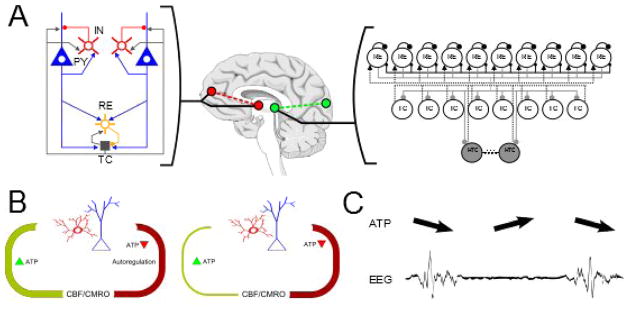Figure 3.

Secondary effects of propofol lead to anteriorization and burst suppression. (A) The differential structure and cell types (in particular, high-threshold thalamocortical neurons) of fronto-thalamic versus posterior-thalamic networks leads to the phenomenon of Anteriorization ■[23,46,47]. (B) At very high doses, propofol leads to secondary effects on cerebral metabolism which can be modeled as a disruption to the rate of ATP regeneration in local circuits. (C) This disruption causes periodic cessation of neuronal activity when ATP levels drop below threshold-levels. This cessation, in turn, manifests as the phenomenon of EEG burst suppression ■[6]. Figure adapted from ■[6,46].
